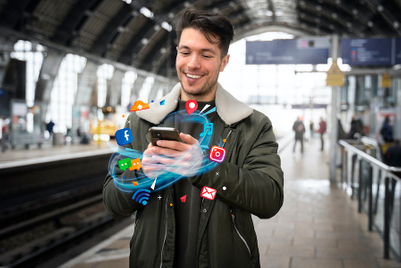
Rola and Kenichi Endo were the most popular celebrities among brands last year, according to a ranking by Nihon Monitor, Japan’s oldest TV research company. Rola, a 27-year-old TV personality and fashion model, endorsed a total of 15 brands. Endo, a 56-year-old actor and writer, endorsed 12.
Other in-demand figures included actresses Suzu Hirose, Mitsuki Takahata and Haruka Ayase, members of the pop group Arashi and tennis player Kei Nishikori.
Here is the full ranking according to the number of brands endorsed.
Female celebrities
1. Rola (15 brands)
2. Suzu Hirose (14 brands)
3. Kasumi Arimura (11 brands)
4. Haruka Ayase, Aya Ueto, Mitsuki Takahata, Emi Takei, Haru, Riho Yoshioka, Yo Yoshida (10 brands each)
Male celebrities
1. Kenichi Endo (12 brands)
2. Masaki Aiba (Arashi), Kei Nishikori (11 brands each)
3. Kazunari Ninomiya (Arashi), Jun Matsumoto (Arashi) (10 brands each)
4. Sho Sakurai (Arashi), Daigo, Hidetoshi Nishijima, Kento Yamazaki (9 brands each)
By international standards, that is a lot of endorsement—many would say too much from an advertiser’s perspective. But there are nuances to consider.
Keiichi Yoshizaki, an executive officer of Dentsu and managing director of the company’s Content Business Design Center, said the celebrity ultimately determines their volume of endorsement. While some open themselves up to a wide range of offers, others limit their endorsements to control their image.
He said that wide exposure as a celebrity endorser can lead audiences to compare the quality of that celebrity’s appearance between brands, which is not what advertisers hope to achieve.
At the same time, he said, brands can still derive good value from a celebrity that appears in a large amount of commercial messaging. It comes down to the individual, and how comfortable the celebrity is in their own skin.
“There’s a reason why Rola and Keiichi Endo are cast by this many brands,” Yoshizaki said. “Rola is good at generating appeal among a lot of brands but not making the same impression. And Mr Endo is a very good actor, so he doesn’t really give the impression that he’s in such a large number of brands’ commercials.”
Yoshizaki also offered a point of view on what makes a celebrity appealing and useful for advertisers. “When the celebrity can speak about themselves, when they know about themselves, then it becomes easier for the brand to connect with them,” he said. “If you think about George Clooney, you don’t just think of him as a good looking guy. Because we understand his personality, if we have a George Clooney-type Japanese guy, I think a lot of brands would be interested in casting him.
“Celebrities that succeed in self-branding are also generally very successful for brands,” he concluded.



.jpg&h=334&w=500&q=100&v=20250320&c=1)

+(900+x+600+px)+(3).png&h=334&w=500&q=100&v=20250320&c=1)




.jpg&h=334&w=500&q=100&v=20250320&c=1)







.jpg&h=268&w=401&q=100&v=20250320&c=1)
.jpg&h=268&w=401&q=100&v=20250320&c=1)